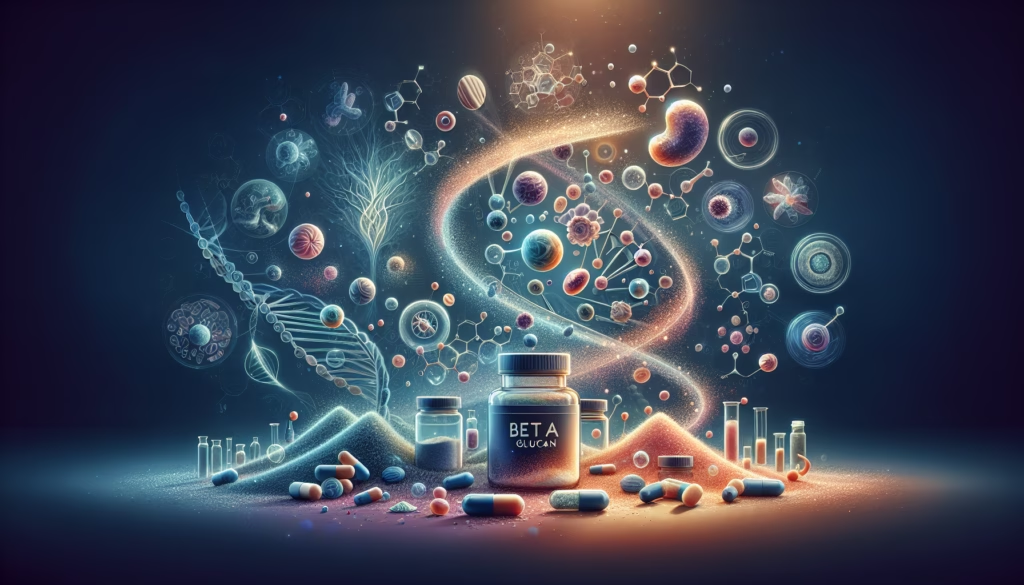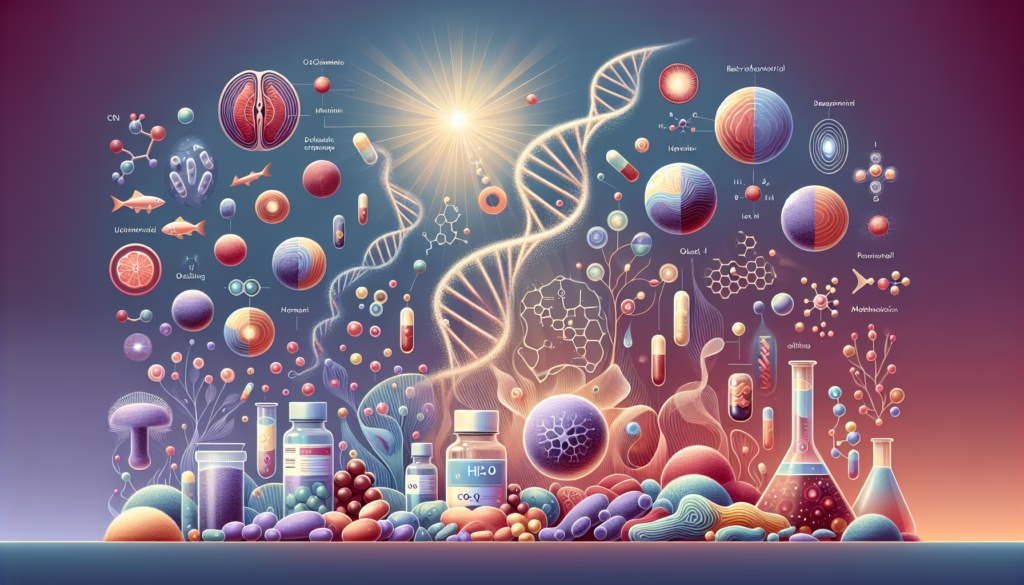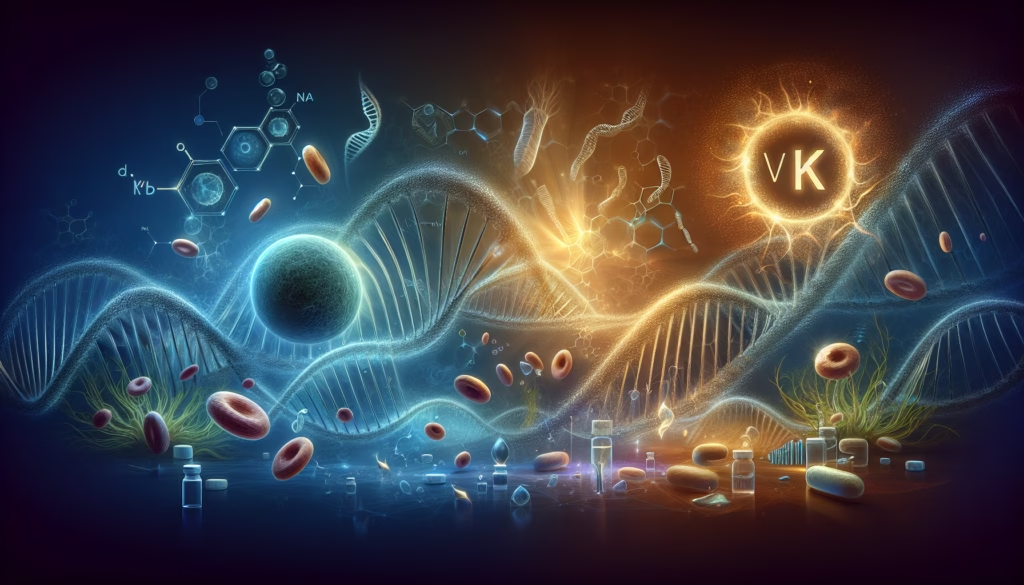
Beta Glucan
Discover the science-backed potential of beta glucan as an adjunct in cancer therapy. This post delves into the latest research
Click 
Sodium bicarbonate, commonly known as baking soda, has emerged as a potential therapeutic agent in cancer treatment due to its ability to neutralise tumour acidity and impact the tumour microenvironment (TME). Below is an overview of its mechanisms and applications in cancer therapy.
Neutralising Tumour Acidity
Tumours often exhibit an acidic microenvironment due to hypoxia and altered metabolism, which promotes growth, invasion, and resistance to therapies. Sodium bicarbonate can buffer this acidity, increasing the pH within tumours and inhibiting their progression145.
By alkalising the TME, sodium bicarbonate disrupts glycolysis-dependent cancer cells, leading to glucose deprivation and cell death2.
Enhancing Chemotherapy
Sodium bicarbonate may improve chemotherapy efficacy by reactivating dormant cancer cells that are resistant to treatment. Dormant cells often arise in acidic environments where their metabolism is suppressed. Neutralising acidity with sodium bicarbonate can make these cells more susceptible to chemotherapy13.
Immune System Modulation
Disrupting Cancer Cell Metabolism
Alkalisation affects intracellular pH, mitochondrial function, and oxidative phosphorylation (OXPHOS), ultimately triggering autophagy and cell death. This mechanism further highlights sodium bicarbonate’s potential as a direct anticancer agent2.
Animal Studies
In mouse models of breast cancer, oral or parenteral administration of sodium bicarbonate reduced tumour acidity, enhanced chemotherapy responses, and inhibited tumour growth25.
Subcutaneous injections of sodium bicarbonate around tumours improved survival rates and reduced metastasis in breast cancer models2.
Clinical Applications
A clinical trial using transarterial chemoembolization (TACE) combined with 5% sodium bicarbonate demonstrated a 100% objective response rate (ORR) for hepatocellular carcinoma compared to lower rates with conventional methods36.
Sodium bicarbonate has also been used in leukaemia patients post-stem cell transplants to reverse T-cell suppression caused by lactic acid secretion from AML cells7.
Despite promising preclinical data, large-scale clinical trials are needed to confirm the efficacy and safety of sodium bicarbonate in cancer therapy. Challenges include optimising dosing strategies, understanding long-term effects, and addressing potential toxicity or systemic alkalisation risks45.
Sodium bicarbonate represents a novel approach to targeting the acidic tumour microenvironment, enhancing chemotherapy and immunotherapy while directly inhibiting cancer cell metabolism. Its affordability and accessibility make it a compelling candidate for further research in cancer treatment protocols.
There are no standardised dosage recommendations for sodium bicarbonate in cancer treatment. Clinical trials investigating its use typically employ varying doses and administration routes. Clinical studies have reported dosages ranging from 1 to 3 grams per day, but self-administration without medical supervision can be dangerous due to potential side effects and interactions with other medications.
Breast Cancer, Colorectal Cancer, Leukemia, Lung Cancer, Prostate Cancer, Skin Cancer (including Melanoma)
Sodium bicarbonate, while beneficial in certain medical contexts, can cause a range of side effects, especially when used in large doses or over prolonged periods. Below is a summary of its potential side effects:
Metabolic Issues:
Respiratory Problems:
Gastrointestinal Complications:
Cardiovascular and Renal Effects:
Milk-alkali syndrome when combined with excessive calcium intake
Rhabdomyolysis (muscle breakdown) in rare cases of abuse
Seizures or mental changes like confusion and memory issues78.
People with the following conditions should use sodium bicarbonate cautiously or avoid it entirely:
Congestive heart failure
Kidney disease
Liver disease with fluid retention
Diabetic ketoacidosis (DKA)
Seek immediate medical help if experiencing:
Severe headache or vomiting resembling coffee grounds
Blood in stools or urine
Proper dosing and medical supervision are critical to mitigate these risks.
Sodium bicarbonate has been studied in combination with various cancer therapies to enhance efficacy by targeting tumour acidity. Below are key combinations tested in preclinical and clinical settings:
Weak-Base Chemotherapies: Sodium bicarbonate improves uptake of drugs like doxorubicin and mitoxantrone by alkalising the tumour microenvironment (TME), enhancing their cytotoxic effects in breast cancer models47.
Transarterial Chemoembolization (TACE):
Immune Checkpoint Inhibitors:
CAR-T Cell Therapy:
Sodium bicarbonate upregulated MSLN antigen expression in TNBC, pancreatic, and ovarian cancers, boosting CAR-T efficacy11.
Adoptive T-Cell Transfer:
Buffering TME acidity with sodium bicarbonate enhanced T-cell infiltration and activity in melanoma10.
Radiotherapy: Proposed as a combination to improve radiation sensitivity in acidic tumors4.
SLC4A4 Inhibition: Blocking bicarbonate transporters (e.g., Slc4a4) alongside immune checkpoint inhibitors reduced pancreatic cancer aggressiveness and improved survival8.
Dosing Limitations: High oral doses (~16.3 g/day) caused gastrointestinal issues and poor compliance in trials, prompting recommendations for lower doses paired with other therapies9.
Survival Data: While TILA-TACE improved short-term responses, long-term survival benefits remain inconclusive due to small trial sizes7.
| Combination Therapy | Cancer Type | Outcome |
|---|---|---|
| TILA-TACE | Hepatocellular carcinoma | 100% objective response rate17 |
| Anti-PD-L1 + NaHCO₃ | TNBC | Tumour growth inhibition, extended survival36 |
| Doxorubicin + NaHCO₃ | Breast cancer | Enhanced chemotherapy uptake4 |
These findings highlight sodium bicarbonate’s potential as an adjuvant therapy, though large-scale trials are needed to validate clinical benefits19.
Sodium bicarbonate therapy has shown potential to positively impact the quality of life (QoL) for cancer patients, primarily by alleviating symptoms associated with cancer treatments and improving physiological conditions. Here is a summary of its QoL effects based on available studies:
Study Design: A randomised controlled trial tested sodium bicarbonate mouthwash in cancer patients undergoing chemotherapy.
Findings: Sodium bicarbonate significantly reduced the severity of oral mucositis, a painful condition caused by chemotherapy, compared to a placebo group. This improvement was observed as early as the first week and continued through three weeks of treatment.
Impact on QoL: Patients reported better oral health and overall comfort, leading to improved eating and speaking abilities, which are critical for maintaining nutritional status and social interactions during treatment3.
Ascites Relief: In a case study of ovarian cancer with malignant ascites, intraperitoneal sodium bicarbonate perfusions led to the resolution of ascites and stabilisation of the disease. This reduced abdominal discomfort and improved mobility, enhancing the patient’s daily functioning1.
Hypoglycaemia Resolution: In a patient with Doege-Potter syndrome (secondary to metastatic tumours), sodium bicarbonate therapy resolved hypoglycaemia caused by tumour activity. This likely contributed to better energy levels and reduced fatigue1.
Sodium bicarbonate has been shown to improve the efficacy of chemotherapy by neutralising tumour acidity and reactivating dormant cancer cells. By making tumours more responsive to treatment, it may reduce the need for higher doses of chemotherapy drugs, potentially minimising side effects like nausea, fatigue, and hair loss8.
This indirect benefit could enhance QoL by reducing the physical and emotional toll of aggressive cancer treatments.
While sodium bicarbonate has benefits, side effects like gastrointestinal discomfort (e.g., bloating or cramps) or metabolic alkalosis could negatively affect QoL if not carefully managed24. Proper dosing and monitoring are essential to avoid these issues.
Sodium bicarbonate therapy can improve quality of life in cancer patients by:
Reducing treatment-related symptoms like oral mucositis.
Managing complications such as ascites or hypoglycaemia.
Enhancing the effectiveness of chemotherapy, potentially reducing its side effects.
However, careful medical supervision is required to balance its benefits against potential risks. Further clinical trials are needed to confirm these findings across broader patient populations.
We’ve done our best to include as much information as possible for this supplement.
If you have any other questions, please send us a message or join our Skool Group and ask our knowledgeable and friendly community.
Sodium bicarbonate is readily available over-the-counter in pharmacies and supermarkets globally. It is not subject to strict regulatory control as a supplement. However, medical-grade sodium bicarbonate for intravenous use requires a prescription and should only be administered under medical supervision.
Based on available clinical studies, sodium bicarbonate therapy shows varying efficacy across cancer types and patient demographics.
Key findings on optimal candidates include:
| Characteristic | Details | Evidence |
|---|---|---|
| Cancer Type | – Hepatocellular carcinoma (HCC) – Ovarian cancer with peritoneal carcinomatosis – Pancreatic cancer – Non-muscle invasive bladder cancer (NMIBC) |
– HCC: TILA-TACE (sodium bicarbonate + chemoembolization) achieved 100% objective response rate3. – Ovarian: Intraperitoneal sodium bicarbonate reduced ascites and CA-125 levels in a 71-year-old patient3. – Pancreatic: Alkalisation therapy extended median OS to 13.5 months (vs. 10.7 months with FOLFIRINOX alone)1. – NMIBC: Oral sodium bicarbonate improved urine alkalinisation in older males (mean age 69.5)4. |
| Disease Stage | – Advanced/metastatic (HCC, ovarian, pancreatic) – Localised tumours (NMIBC) |
– TILA-TACE studies focused on large-focal HCC3. – Sodium bicarbonate reduced recurrence in early-stage NMIBC4. |
| Performance Status | ECOG PS 0-1 | Patients with better functional status (e.g., pancreatic study cohort: 86% PS 1) tolerated therapy better13. |
| Treatment History | – Exhausted standard therapies – Chemotherapy-resistant tumours |
– Sodium bicarbonate reversed T-cell suppression in relapsed AML post-transplant3. – Used as salvage therapy in progressive ovarian cancer3. |
Age:
Gender:
Therapeutic Context:
No randomised controlled trials stratifying outcomes by demographics.
Small sample sizes (e.g., TILA-TACE cohort had 9 patients) limit generalisability3.
Optimal dosing and duration remain undefined for most cancers.
Patients with advanced HCC, ovarian cancer with peritoneal involvement, or pancreatic cancer and good performance status (PS 0-1) may derive the most benefit. Localised administration (e.g., TILA-TACE) appears particularly effective. Further research is needed to validate demographic-specific responses.
Sodium bicarbonate’s efficacy in cancer therapy can be influenced by several resistance mechanisms, primarily linked to tumour adaptation to alkalisation and pH modulation. Here are the key findings:
Mechanism:
Tumours overexpressing SLC4A4 (a bicarbonate importer) counteract sodium bicarbonate’s alkalising effects by exporting excess bicarbonate, maintaining an acidic microenvironment.
Impact:
Mechanism:
Tumours may increase glycolytic activity to boost lactate secretion, offsetting sodium bicarbonate’s pH-neutralising effects.
Evidence:
PDAC cells with intact SLC4A4 maintained lactate-driven acidosis despite sodium bicarbonate treatment, promoting immune evasion2.
Mechanism:
Alkaliptosis, a pH-dependent cell death triggered by sodium bicarbonate, requires functional autophagy and mitochondrial disruption. Tumours with mutations in alkaliptosis regulators (e.g., ACSS2, HMGB1, NF-κB) resist this death mechanism1.
Impact:
Ovarian cancer cells exposed to alkalising agents like sodium citrate upregulated anti-apoptotic Mcl-1, reducing cytotoxicity1.
Mechanism:
Acidic tumour microenvironments trap weak-base chemotherapeutics (e.g., doxorubicin) in lysosomes, reducing their efficacy. While sodium bicarbonate reverses this, tumours may develop lysosomal adaptations to sustain drug sequestration4.
Evidence:
In breast cancer models, sodium bicarbonate enhanced doxorubicin uptake, but tumours resistant to pH modulation showed limited response4.
Mechanism:
Tumours may upregulate proton pumps (e.g., V-ATPases) or lactate exporters (MCTs) to maintain acidity despite extracellular alkalisation.
Impact:
| Resistance Mechanism | Therapeutic Countermeasure |
|---|---|
| SLC4A4 overexpression | Combine with SLC4A4 inhibitors (e.g., DIDS)2 |
| Glycolytic compensation | Pair with anti-glycolytic agents (e.g., dichloroacetate)1 |
| Alkaliptosis defects | Target alternative pH-dependent death pathways (e.g., ferroptosis)1 |
Tumours resist sodium bicarbonate through bicarbonate transporter upregulation, metabolic adaptations, and defects in alkaliptosis pathways. Overcoming these requires combination therapies targeting pH regulation, glycolysis, and cell death mechanisms.
Preclinical studies on sodium bicarbonate’s anti-cancer effects reveal promising but context-dependent results across multiple cancer models.
Key findings include:
Mouse Xenografts:
Sodium bicarbonate in drinking water increased survival and reduced lung, bowel, and diaphragm metastases in immunodeficient mice with breast tumours, though it did not inhibit primary tumour growth1.
Subcutaneous injections around tumours (every other day) inhibited growth of 4T1 breast cancer models3.
Mechanism: Magnetic resonance spectroscopy confirmed increased intratumoral pH, particularly at the invasive tumour front, which correlated with reduced metastasis13.
HCT116 Cells: Sodium bicarbonate significantly reduced growth of human colon cancer cells in a mouse dorsal skin window chamber model. Tumour pH increased at the invasive edges but not at the center1.
Transgenic Mouse Model:
Sodium bicarbonate initiated at 4 weeks (during intraepithelial neoplasia) reduced invasive cancer development. However, treatment starting at 6 weeks (post-invasion) showed no effect on primary tumour growth1.
Early intervention increased tumour pH, delaying progression from pre-cancerous lesions to aggressive disease1.
TILA-TACE: Combining transarterial chemoembolization (TACE) with 5% sodium bicarbonate achieved a 100% objective response rate in HCC models, outperforming conventional TACE (63.6% response)23.
Ehrlich Ascites Carcinoma (Mice):
Intraperitoneal sodium bicarbonate perfusion extended median survival from 17 days (control) to 24 days by reducing cell proliferation (increased G0/G1 phase cells)3.
Human Case Study: A patient with chemotherapy-resistant ovarian cancer and ascites saw CA-125 levels drop by ~60% and ascites resolve after sodium bicarbonate perfusions3.
Pancreatic Models: Sodium bicarbonate reduced tumour acidity and enhanced chemotherapy efficacy in combination with FOLFIRINOX2.
Bladder Cancer: Oral sodium bicarbonate improved urine alkalinization, potentially inhibiting recurrence in non-muscle invasive cases3.
Variable Efficacy: Sodium bicarbonate failed to inhibit primary tumour growth in advanced prostate and mammary models13.
Dosing Challenges: High oral doses caused gastrointestinal distress in mice, while localised delivery (e.g., TILA-TACE) showed stronger effects13.
Timing Dependence: Efficacy depended on intervention timing (e.g., early vs. late prostate cancer)1.
pH Modulation: Sodium bicarbonate neutralises tumour acidity, disrupting glycolysis, metastasis, and immune suppression12.
Synergy with Therapies: Enhanced chemo/immunotherapy responses by reactivating dormant cells and boosting T-cell activity23.
Preclinical data highlight sodium bicarbonate’s potential as an adjuvant therapy, particularly for metastasis suppression and combination regimens. However, inconsistent effects on primary tumours and dosing hurdles underscore the need for optimised delivery methods (e.g., localised perfusion) in clinical translation134.
Information on active clinical trials involving sodium bicarbonate can be found on platforms like ClinicalTrials.gov. There are ongoing trials exploring sodium bicarbonate in various cancer contexts, ranging from early phase I to phase III studies.
Sodium bicarbonate’s efficacy in cancer therapy has been linked to specific genetic markers, particularly those involved in pH regulation and bicarbonate transport within tumours.
Here are the key findings:
Role in PDAC:
SLC4A4 is the most highly expressed bicarbonate transporter in pancreatic ductal adenocarcinoma (PDAC), identified via single-cell RNA sequencing. Its inhibition reduces tumour acidity, lactate production, and glycolysis, enhancing immune responses and suppressing metastasis14.
In mouse models, Slc4a4 depletion reduced tumour growth by ~90% and eliminated hepatic metastases in aggressive PDAC1.
Prostate and Breast Cancer:
SLC4A4 regulates proliferation and viability in prostate cancer cells and promotes invasion in breast cancer (MDA-MB-231)4.
Colon and Breast Cancer:
SLC4A9 (AE4) and SLC4A4 (NBCe1) are critical for colon and breast cancer cell growth. Inhibiting these transporters disrupts cancer cell proliferation4.
SLC4A8/10:
Inhibition of SLC4A8 (NDCBE) or SLC4A10 (NCBE) reduces breast cancer cell viability4.
SLC4A4 Inhibition:
Pharmacological inhibition with DIDS (a non-specific SLC4A4 inhibitor) reduced PDAC tumour growth and metastatic spread in mice, confirming its role as a therapeutic target1.
Biomarker Potential:
| Marker | Cancer Type | Outcome of Inhibition |
|---|---|---|
| SLC4A4 | Pancreatic, prostate, breast | Reduced tumour growth, metastasis |
| SLC4A9 | Colon, breast | Suppressed cell proliferation |
| SLC4A8/SLC4A10 | Breast | Decreased cell viability |
Mechanistic links between SLC4A4 expression and sodium bicarbonate efficacy in humans require validation.
No clinical trials have yet stratified patients by these genetic markers.
Conclusion:
SLC4A4 and related bicarbonate transporters are promising genetic markers influencing sodium bicarbonate’s anticancer effects, particularly in pancreatic, prostate, and breast cancers. Targeting these transporters may enhance therapeutic outcomes14.

Discover the science-backed potential of beta glucan as an adjunct in cancer therapy. This post delves into the latest research

Explore the emerging world of hydrogen gas (H₂), also known as Brown Gas, and its remarkable potential as an adjunct

Explore the latest scientific insights into vitamin K2 and its promising role in cancer therapy. In this comprehensive blog post,
Apoptosis, or programmed cell death, is a natural process where cells self-destruct when they are damaged or no longer needed. This is crucial for maintaining healthy tissues and preventing diseases like cancer.
Drugs and supplements that induce apoptosis help eliminate cancerous cells by triggering this self-destruct mechanism, ensuring that harmful cells are removed without damaging surrounding healthy tissue.
Understanding and harnessing apoptosis is vital in the fight against cancer, as it targets the root cause of the disease at the cellular level.
Cell proliferation is the process by which cells grow and divide to produce more cells. While this is essential for growth and healing, uncontrolled cell proliferation can lead to cancer.
Drugs and supplements that inhibit cell proliferation help prevent the rapid multiplication of cancerous cells, slowing down or stopping the progression of the disease.
By targeting the mechanisms that drive cell division, these treatments play a vital role in controlling and potentially eradicating cancer.
Cancer cells often hijack specific biological pathways to grow and spread. Drugs and supplements that target these pathways can disrupt the cancer cell’s ability to survive and multiply.
By focusing on the unique mechanisms that cancer cells use, these treatments can be more effective and cause fewer side effects compared to traditional therapies.
Targeting specific pathways is a key strategy in precision medicine, offering a tailored approach to combat cancer at its core.
Angiogenesis is the process by which new blood vessels form, supplying nutrients and oxygen to tissues. Cancer cells exploit this process to fuel their growth and spread.
Drugs and supplements that inhibit angiogenesis can effectively starve cancer cells by blocking the formation of these new blood vessels.
By cutting off the supply lines that tumors rely on, angiogenesis inhibitors play a crucial role in controlling and potentially shrinking cancerous growths.
Immunotherapy harnesses the power of the body’s immune system to combat cancer. By boosting or restoring the immune system’s natural ability to detect and destroy cancer cells, immunotherapy offers a targeted and effective approach to treatment.
Drugs and supplements that support immunotherapy can enhance the immune response, making it more efficient at identifying and attacking cancer cells.
This innovative approach not only helps in treating cancer but also reduces the risk of recurrence, providing a powerful tool in the fight against this disease.
Inflammation is the body’s natural response to injury or infection, but chronic inflammation can contribute to the development and progression of cancer.
Drugs and supplements with anti-inflammatory properties help reduce inflammation, thereby lowering the risk of cancer and other chronic diseases.
By targeting the inflammatory processes, these treatments can help maintain a healthier cellular environment and prevent the conditions that allow cancer to thrive.